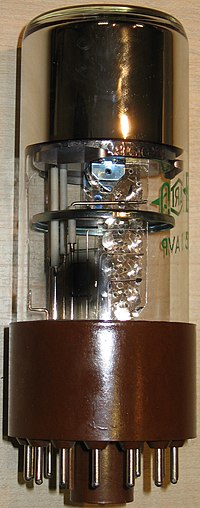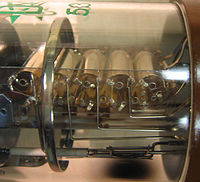
Back صمام تضخيم ضوئي Arabic Tub fotomultiplicador Catalan Fotonásobič Czech Photomultiplier German Fotomultiplicador Spanish Fotokordisti Estonian لامپ فوتوفزونگر Persian Valomonistinputki Finnish Tube photomultiplicateur French Fóta-iolróir Irish

Photomultiplier tubes (photomultipliers or PMTs for short) are extremely sensitive detectors of light in the ultraviolet, visible, and near-infrared ranges of the electromagnetic spectrum. They are members of the class of vacuum tubes, more specifically vacuum phototubes. These detectors multiply the current produced by incident light by as much as 100 million times or 108 (i.e., 160 dB),[1] in multiple dynode stages, enabling (for example) individual photons to be detected when the incident flux of light is low.

The combination of high gain, low noise, high frequency response or, equivalently, ultra-fast response, and large area of collection has maintained photomultipliers an essential place in low light level spectroscopy, confocal microscopy, Raman spectroscopy, fluorescence spectroscopy, nuclear and particle physics, astronomy, medical diagnostics including blood tests, medical imaging, motion picture film scanning (telecine), radar jamming, and high-end image scanners known as drum scanners. Elements of photomultiplier technology, when integrated differently, are the basis of night vision devices. Research that analyzes light scattering, such as the study of polymers in solution, often uses a laser and a PMT to collect the scattered light data.
Semiconductor devices, particularly silicon photomultipliers and avalanche photodiodes, are alternatives to classical photomultipliers; however, photomultipliers are uniquely well-suited for applications requiring low-noise, high-sensitivity detection of light that is imperfectly collimated.